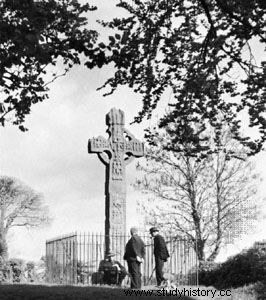Tyrone , former county (until 1973), Northern Ireland . It was formed by the former counties Londonderry (north) and Fermanagh and Monaghan (south) and from the former county Armagh and Lough (See) Neagh (East). It had an area of 1,260 square miles (3,263 square kilometers). In the north rise the Sperrin Mountains at 678m, with the highest peaks being Sawel and Mullaghcloga. To the southwest, Bessy Bell (1,387 feet) and Mary Gray (803 feet) span the River Morne . Sandstones and limestones are most common in south and west former Tyrone County. Mountain bogs are unproductive, but river valleys are extremely fertile. Lough Neagh The largest lake in the British Isles is on the eastern border. The climate is temperate with an average annual rainfall of more than 1,400 mm in the mountainous north.

The former county took its name from Tir Eoghain (Land of Eoghan, son of Niall of the Nine Hostages). From the 5th to the 16th century Display , the O'Nialls (or O'Neills) were rulers of this area and successive chiefs were established at Tullaghoge at Dungannon deployed . After escaping (1607) from Hugh O'Neill , 2nd Earl of Tyrone, of the English, forfeited ownership of his vast lands and passed to the Crown; The lands were subsequently inherited by the king as part of the Ulster split and granted . Royalist forces under Lord Mountjoy established fortifications at strategic points; and Tyrone was colonized. In 1688-89, James II's troops occupied part of Tyrone, and Omagh has been severely corrupted.
When the administrative reorganization of Northern Ireland took place in 1973, the county was divided into Strabane , Omagh and Dungannon and part of the District Cookstown split.
